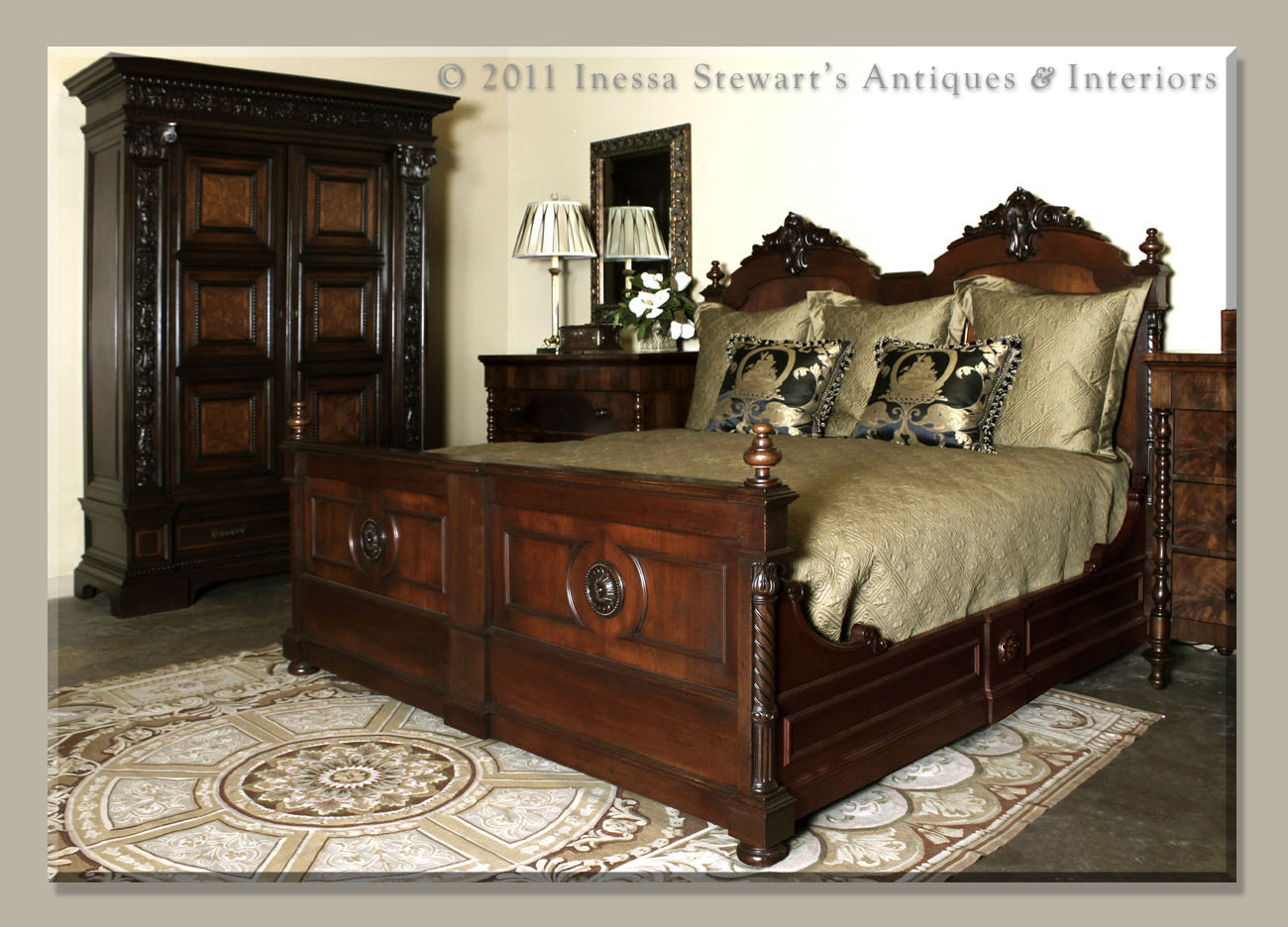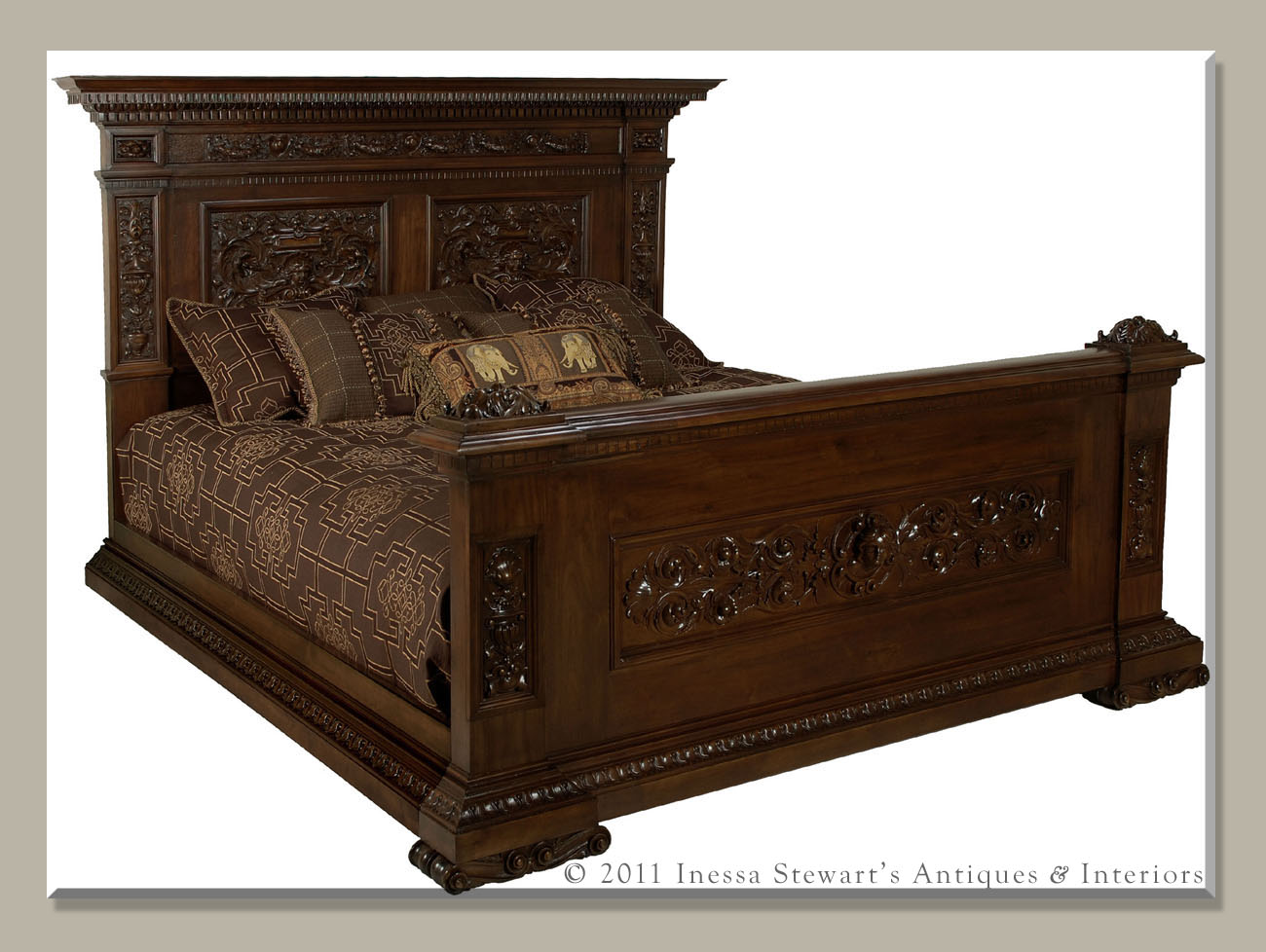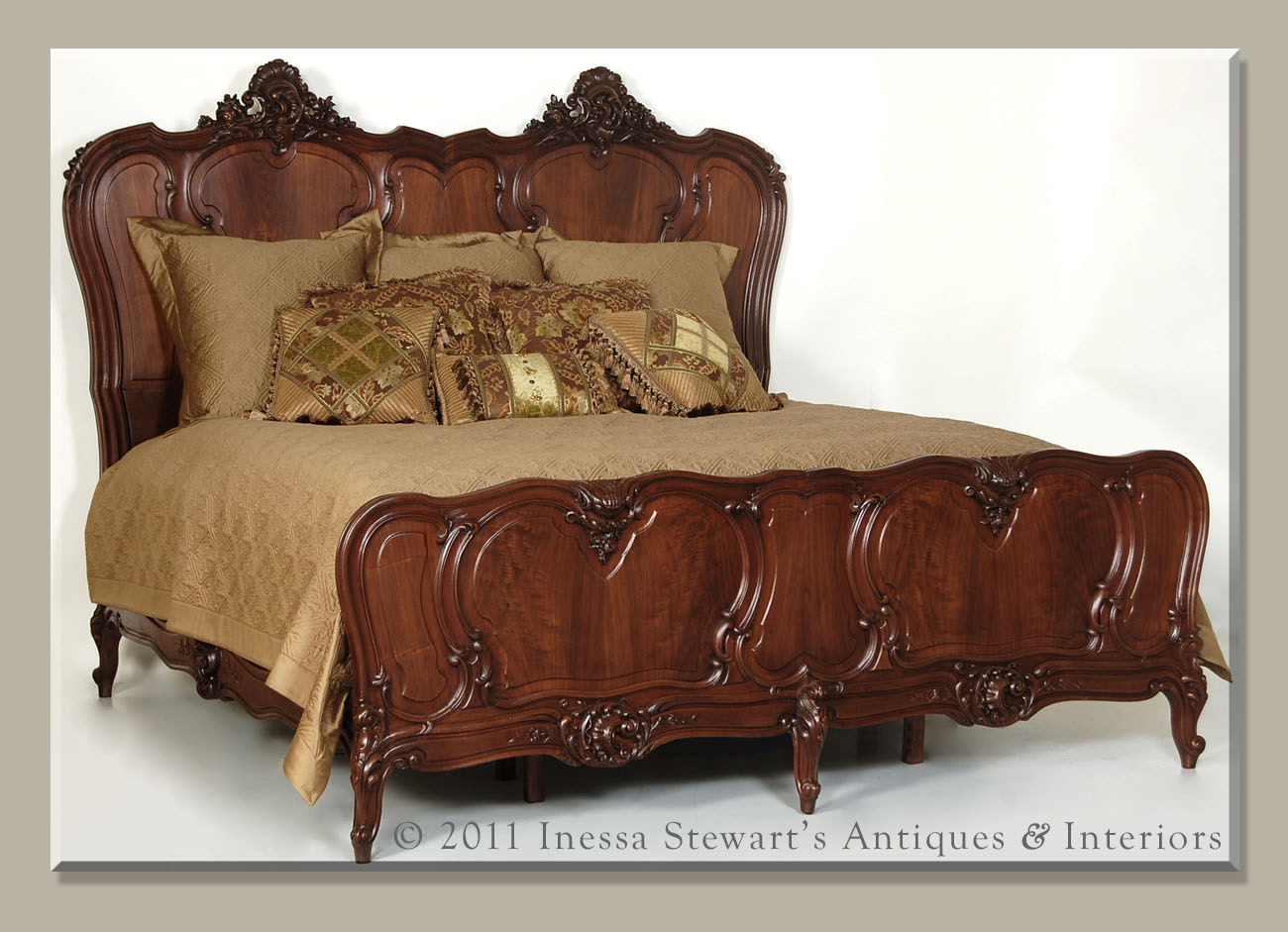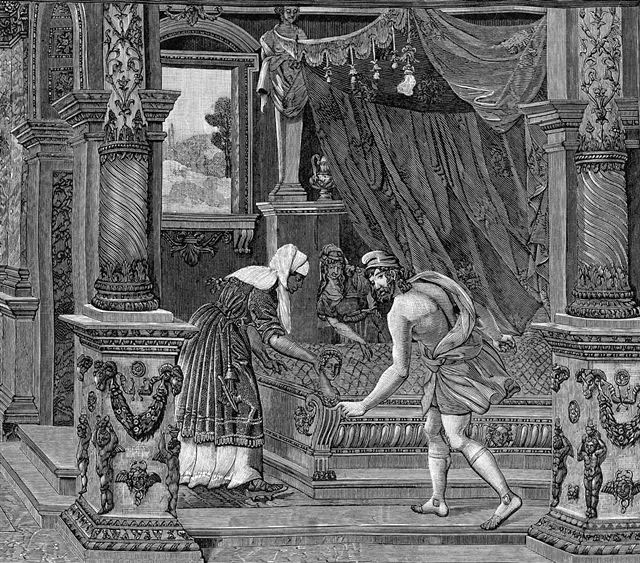 Beds started out just like other antique furniture~ to serve a utilitarian and practical purpose ~ but evolved over the millennia to become treasured and coveted antique status symbols.
Beds started out just like other antique furniture~ to serve a utilitarian and practical purpose ~ but evolved over the millennia to become treasured and coveted antique status symbols.
“The bed has become a place of luxury to me! I would not exchange it for all the thrones in the world”, exclaimed Napoleon Bonaparte. But exactly how did the antique bed evolve from a simple utilitarian item to such a prized heirloom? Let us explore.
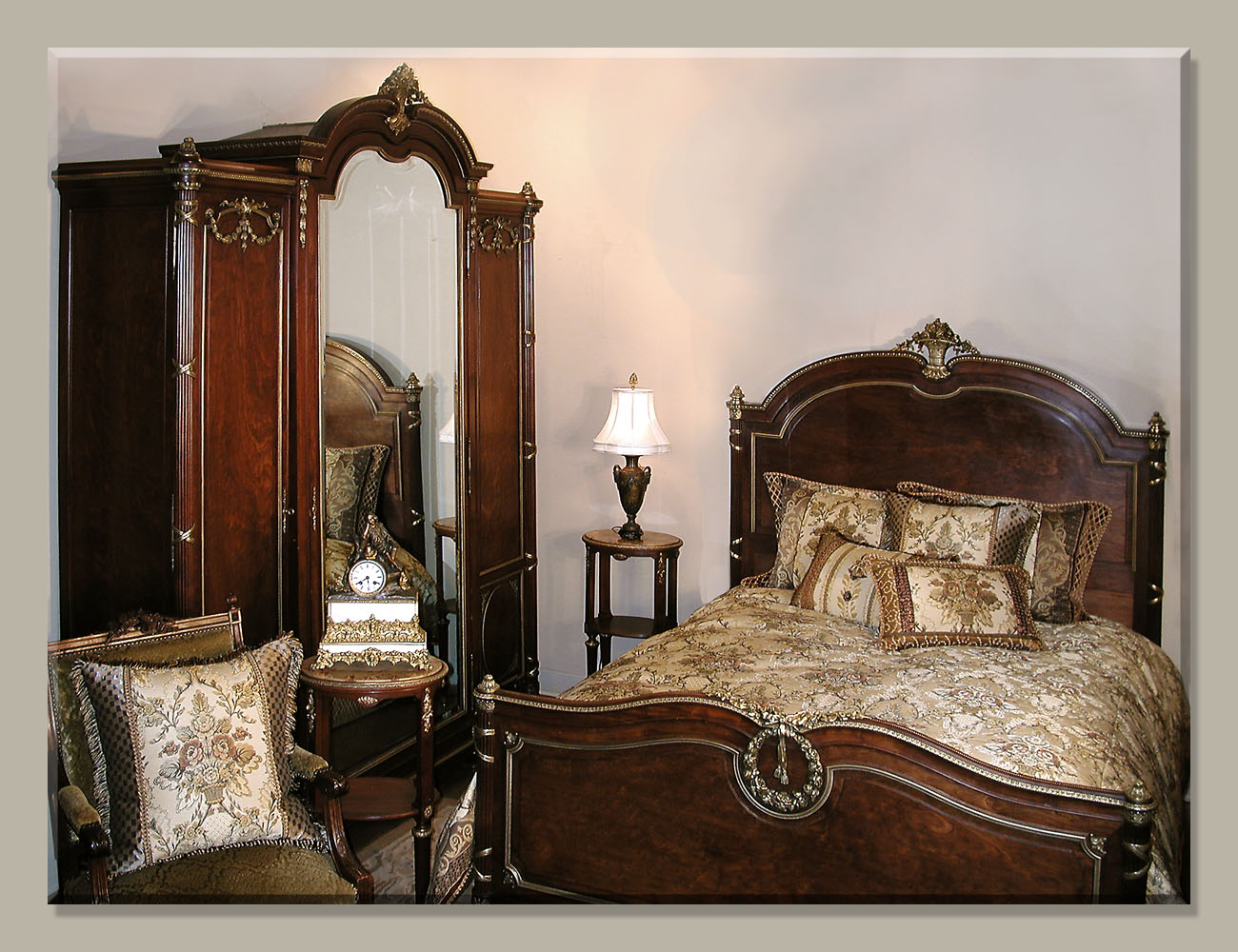 Louis XVI mahogany antique bedroom with ormolu mounts
Louis XVI mahogany antique bedroom with ormolu mounts
The early archeological discoveries in ancient Egypt reveal that Pharaohs realized the benefits of raising a simple pallet off the floor and making it the center of the bedchamber. Tutankhamen in 1300 BC decorated his bed with ebony and gold. Egyptian beds were frequently designed with animal-shaped legs emulating a bull or lion. Whole empires were born out of plans conceived in the beds of such seductresses as Egyptian Queen Cleopatra. Empress Josephine drew inspiration from these archeological discoveries and created her famous Empire bed. To simulate the solid gold of ancient Egypt, the French used Ormolu ~ bronze mounts cast in wax and washed in gold. No wonder the Emperor was so fond of his bed…
Louis Philippe period antique bed, ca. 1840s, converted to King by Inessa Stewart’s staffIn the Roman Empire, luxurious antique beds were not just for emperors. The typical Roman home was sparsely furnished, but special niches, cubicula or bedrooms were created for sleeping at night or for daytime rest. The wealthy nobleman had exquisite beds created out of wood and marble, decorated lavishly with bronze, silver and gold.
Antique Italian Renaissance walnut bed, ca. 1890s, converted to King by Inessa Stewart’s staffSadly, during the Middle Ages these glorious designs and finery were lost, buried under ash and destroyed by wars. It was many centuries before our ancestors gave up a nomadic existence and felt safe and secure enough to once again rebuild the luxury of a romantic bedroom. During the Gothic period antique beds re-evolved from a lowly pallet of rope and straw to the first simple four-poster bed. In medieval Europe nobleman created these beds at first out of necessity, as they desired warmth (antique castles and chateaux where drafty) and privacy (attendants and servants slept in the same room). Early Gothic furniture followed the lines of architecture. There were special beds carved for special occasions, such as for a dowry. Until the glorious rebirth of art and style swept through Europe during the Renaissance, these beds were fairly simple and plain. During the 14th and 15th centuries the great artisans of the Renaissance began designing carved headboards and posts.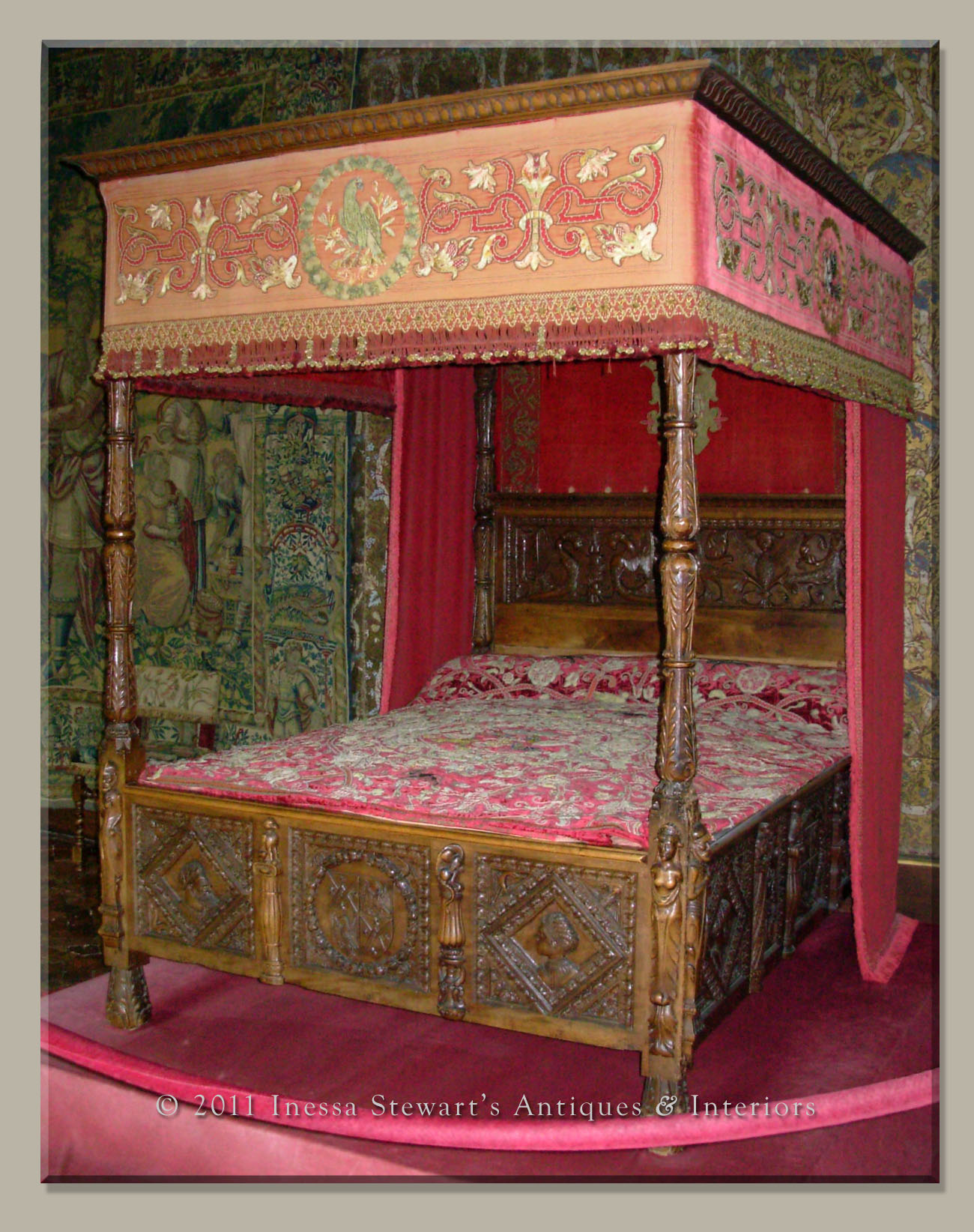
After Roman and Greek antiquities were discovered, interest in classicism of the past was revitalized. Of course the grand antique beds and daybeds found in the ancient ruins provided inspiration for Renaissance bedsteads and daybeds.
Antique Louis XV walnut bed, ca. 1880s, converted to King by Inessa Stewart’s staffDuring the 16th and 17th centuries, royals and nobleman’s bedchambers became more public spaces for meetings and receptions, so the grand antique bed burgeoned into a status symbol once again!

